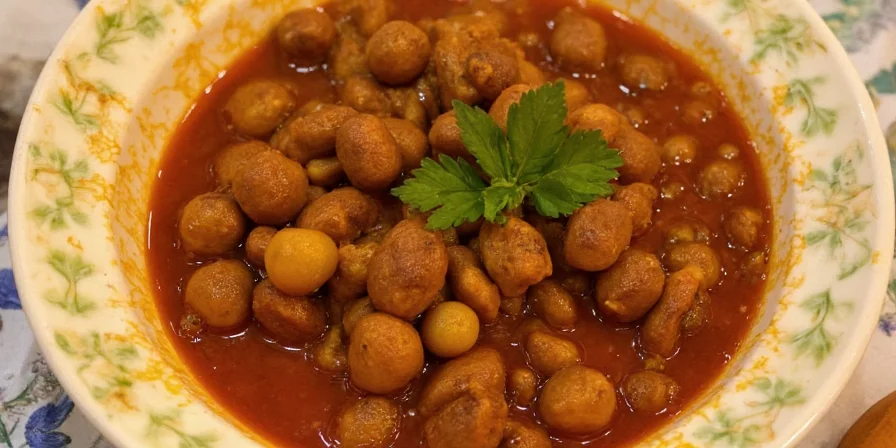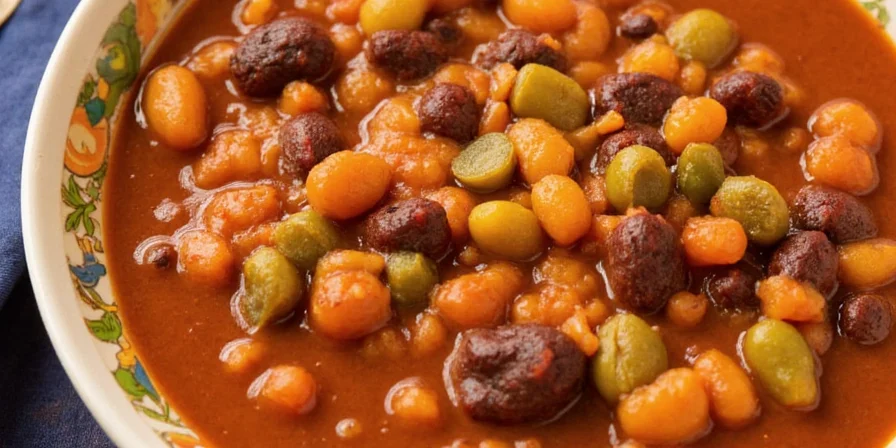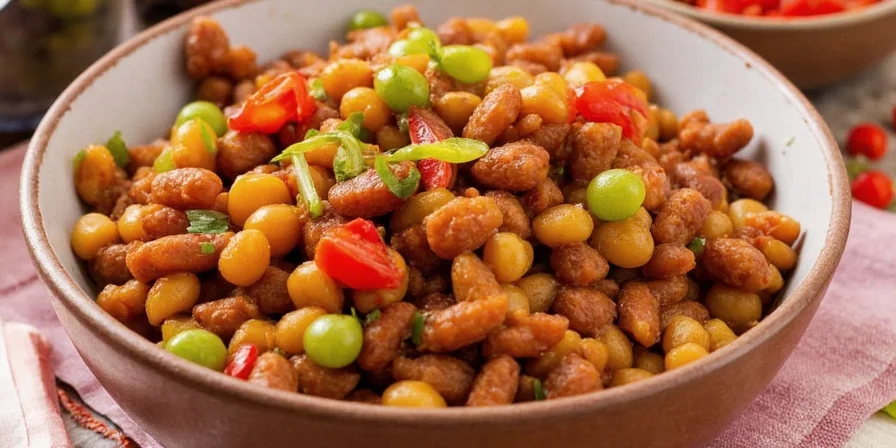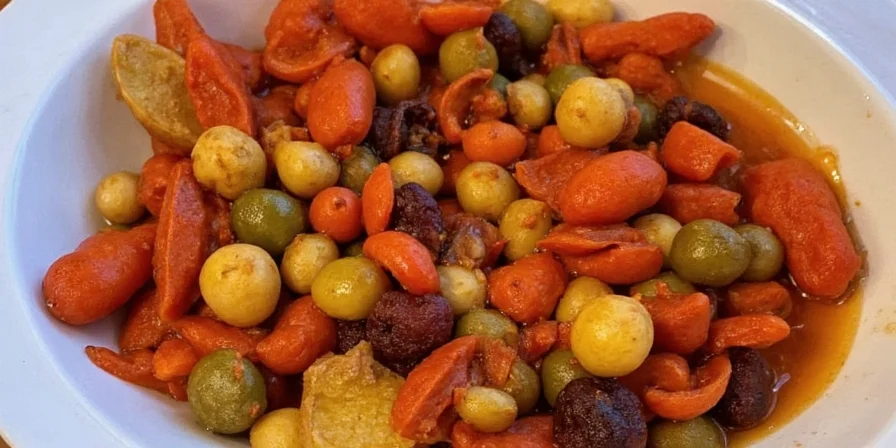Haitian Legume: The Spicy Symphony of Flavors You Can’t Miss!

A traditional serving of Haitian Legume—a feast for the eyes and taste buds.
Table of Contents
- What is Haitian Legume?
- The Spice-Packed Ingredients Behind the Magic
- Cooking Tips: How to Master Your Own Haitian Legume at Home
- Spice Breakdown: From Mild to Wild
- Cultural Roots and Regional Twists
- Common Mistakes (and How to Avoid Them)
- Serving Suggestions That’ll Make Everyone Ask for Seconds
- Health Benefits: Why Legume Should Be on Your Weekly Menu
- Conclusion
🌶 What Is Haitian Legume Anyway?
Alright, let’s get real. If you’ve never heard of Haitian Legume, prepare your taste buds for a party they didn’t know they were invited to. Legume (pronounced “lay-gume” and not pronounced like that vegetable thing from your childhood nightmares) is a cornerstone of Haitian cuisine—and it’s not just one ingredient. It’s more like a flavor-packed symphony of meats, vegetables, spices, and aromatics simmered together into one glorious pot of deliciousness.
Think of it as Haiti’s version of soul food—comforting, rich, and always served with love. But here's the kicker: no two Legumes are ever exactly the same. Each household adds their own twist, making it a deeply personal dish with layers of flavor (and family pride).
🧄 The Spice-Packed Ingredients Behind the Magic
Let’s talk about what goes into this spicy masterpiece. At its heart, Haitian Legume is all about balance—between textures, proteins, veggies, and, most importantly, the spices. Here’s a quick list of the usual suspects:
| Ingredient | Role in Legume | Substitute (if needed) |
|---|---|---|
| Olive oil or vegetable oil | Sauté base for aromatics | Coconut oil (adds sweetness) |
| Persil (Culantro) | Signature herbal note | Cilantro (not ideal but works) |
| Grenade pepper or Scotch Bonnet | Spice & aroma booster | Jalapeño (less heat, less flavor) |
| Dry spices (thyme, paprika, turmeric) | Depth of flavor | Fresh herbs + ground spices |
| Mixed meats or seafood | Main protein source | Tofu or mushrooms (for veggie lovers) |
| Vegetables (okra, cabbage, carrots, green beans) | Texture & nutrition | Seasonal root veggies or leafy greens |

Your spice rack may never be the same after this lineup.
👩🍳 Cooking Tips: How to Master Your Own Haitian Legume at Home
Cooking a killer Haitian Legume doesn’t require a culinary degree—but it does require attention to detail, patience, and maybe a strong fan if things start getting smoky. Here are some pro tips to nail this dish every time:
- Don’t skip the sofrito step! Start with sautéing onions, garlic, persil, and peppers until fragrant—it’s the foundation of flavor.
- Use dry spices early so they bloom properly in the oil before adding liquid ingredients.
- Simmer low and slow to let flavors meld beautifully. Rushing will leave you with sad, disjointed flavors.
- Taste as you go! Adjust salt, spice, and acid (like lime juice or vinegar) throughout the process.
- Layer proteins smartly—start with tougher cuts (like goat or oxtail), then add tender ones (like chicken or shrimp) later.
🔥 Spice Breakdown: From Mild to Wild
If you’re new to Haitian Legume, the spice level can be intimidating. Let’s break it down into manageable heat zones so you don’t end up crying into your rice:
| Heat Level | Description | Ingredients Involved |
|---|---|---|
| Mild | Perfect for kids or spice newbies | No hot peppers; use mild paprika instead |
| Medium | Nice warmth without overwhelming heat | One diced scotch bonnet or grenade pepper |
| Hot | Bring on the sweat and smiles | Whole chili added and removed halfway |
| 🔥 Inferno 🔥 | For those who measure pain in flavor units | Two chilies, seeds included |

The little guys that pack a punch.
🌍 Cultural Roots and Regional Twists
Haitian Legume isn’t just a dish—it’s a cultural celebration. Rooted in African, French, and Caribbean influences, Legume varies across regions and families. Some variations include:
- Legume de Zoreille – Features smoked sausage or pork belly for extra smokiness.
- Legume au Poisson – A coastal version with fresh fish, conch, or shrimp.
- Legume Végétarien – Vegan versions using eggplant, lentils, or jackfruit.
- Urban Legume – Uses chicken thighs and store-bought spices for convenience.
No matter the variation, the goal remains the same: bring people together over a bubbling pot of flavor and tradition.
❌ Common Mistakes (and How to Avoid Them)
We’ve all been there. You try to recreate your favorite restaurant dish at home, only to end up with something that looks like science experiment soup. Here’s how to dodge common Legume landmines:
- Using too much water upfront – Add broth gradually to avoid a watery mess.
- Overloading the pot – Don’t cram everything in at once. Layer ingredients by cooking time.
- Skipping the resting time – Letting it sit for 10–15 minutes allows flavors to settle and deepen.
- Not adjusting seasoning – Taste constantly and tweak salt, acid, and spice levels as needed.
- Using dried herbs instead of fresh – Fresh herbs make a huge difference. If you must use dried, reduce quantity by half.
🍚 Serving Suggestions That’ll Make Everyone Ask for Seconds
Legume is best when shared—and paired with the right sides, it becomes a full-on flavor festival. Here are some classic and creative ways to serve it:
- Rice – White rice, fried rice, or coconut-infused rice to soak up all that goodness.
- Bananas – Fried ripe plantains or boiled bananas add sweetness and contrast.
- Fried dumplings or cassava bread – For dipping and scooping action.
- Avocado slices – To cool things down if you went full inferno mode.
- Pickled vegetables – Adds brightness and balances richness.

How to plate your Legume like a pro.
🥗 Health Benefits: Why Legume Should Be on Your Weekly Menu
Here’s the bonus round: Haitian Legume isn’t just tasty—it’s also good for you! With tons of vegetables, lean proteins, and antioxidant-rich spices, it’s a powerhouse meal packed with benefits:
- Rich in fiber from veggies and legumes helps with digestion.
- Anti-inflammatory spices like turmeric and thyme support overall wellness.
- Healthy fats from olive oil and avocado improve heart health.
- Protein-loaded options help build muscle and keep you full longer.
- Customizable macros – Swap out ingredients for keto, vegan, or low-carb versions easily.
🎉 Conclusion: Let’s Get Cooking!
So there you have it—your complete guide to mastering Haitian Legume at home. Whether you're a seasoned chef or a curious newbie, this dish has everything you want: bold spices, comforting textures, and deep cultural roots.
Remember, Legume isn’t about following a strict recipe. It’s about expressing yourself through flavor, experimenting with ingredients, and most importantly, having fun while doing it. So grab your apron, raid your pantry, and get ready to impress your friends and family with your newfound Legume skills!











 浙公网安备
33010002000092号
浙公网安备
33010002000092号 浙B2-20120091-4
浙B2-20120091-4